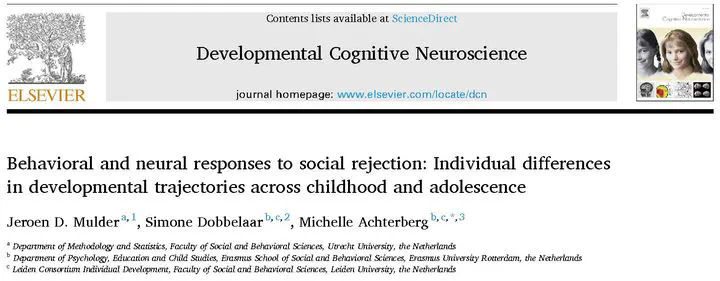Behavioral and neural responses to social rejection: Individual differences in developmental trajectories across childhood and adolescence
Apr 1, 2024·,,·
0 min read
Jeroen D. Mulder
Simone Dobbelaar
Michelle Achterberg

Abstract
Dealing with social rejection is challenging, especially during childhood when behavioral and neural responses to social rejection are still developing. In the current longitudinal study, we used a Bayesian multilevel growth curve model to describe individual differences in the development of behavioral and neural responses to social rejection in a large sample (n > 500). We found a peak in aggression following negative feedback (compared to neutral feedback) during late childhood, as well as individual differences during this developmental phase, possibly suggesting a sensitive window for dealing with social rejection across late childhood. Moreover, we found evidence for individual differences in the linear development of neural responses to social rejection in our three brain regions of interest: The anterior insula, the medial prefrontal cortex, and the dorsolateral prefrontal cortex. In addition to providing insights in the individual trajectories of dealing with social rejection during childhood, this study also makes a meaningful methodological contribution: Our statistical analysis strategy (and can be found in this study’s online supplementary materials at
) can be used as an example on how to take into account the many complexities of developmental neuroimaging datasets, while still enabling researchers to answer interesting questions about individual-level relationships.
Type
Publication
Developmental Cognitive Neuroscience, 66